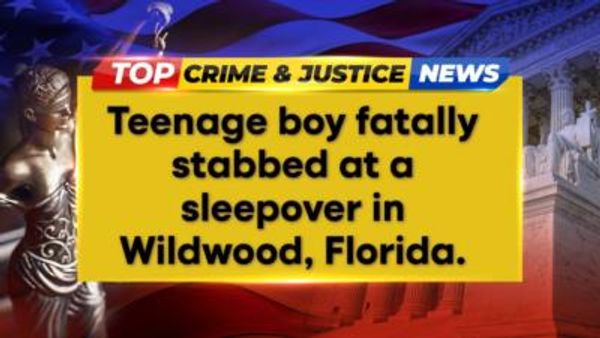You're staring down the mouth of a 6-ton dinosaur. Should you play dead? Can you outrun it? Can't you just feed it a large fern frond?
You'd better know, because "Jurassic World Dominion” opens June 10, and dinosaurs are really going to be on the rampage this time.
The sixth film of the “Jurassic Park” franchise and third in the “Jurassic World" trilogy, “Dominion” may also be the grand finale—or the beginning of a new series, depending on who you talk to.
In the new film directed by Colin Trevorrow, actors Chris Pratt and Bryce Dallas Howard are joined by franchise veterans Oscar-winner Laura Dern, Jeff Goldblum and Sam Neill. The story takes place about four years after Isla Nublar was destroyed in “Jurassic World: Fallen Kingdom.”
Dinosaurs naturally have gotten loose again, and they’re mad, hungry and everywhere—in the tropics and deserts, swimming in frozen lakes and hunting in the narrow streets of charming European cities. Humans now share the planet with history’s most fearsome creatures, but everyone’s hair still looks really good.
Under the circumstances, you’d better know your Allosaurus from your Apatosaurus, your Stegasaurus from your Suchomimus, and your therapods from your sauropods. Do you know your herbivores from your carnivores, your fictional cloned animals from your real-world specimens?
Note of clarity for dino-enthusiasts: We do know that flying dinosaurs are not actually dinosaurs. They are, more accurately, flying reptiles, possibly pterosaurs. While most fans of Jurassic franchise don't worry about that too much, you're welcome to check out the complete explanation at Britannica.
According to reports, “Jurassic World Dominion” will introduce several creatures we haven’t seen yet in the fictional series, and few favorites will return, too. So here's your guide to the large lizards, amphibious animals, cloned carnivores and benign behemoths of the Jurassic Park series, and what to look for in the new film. Don't worry, no spoilers.
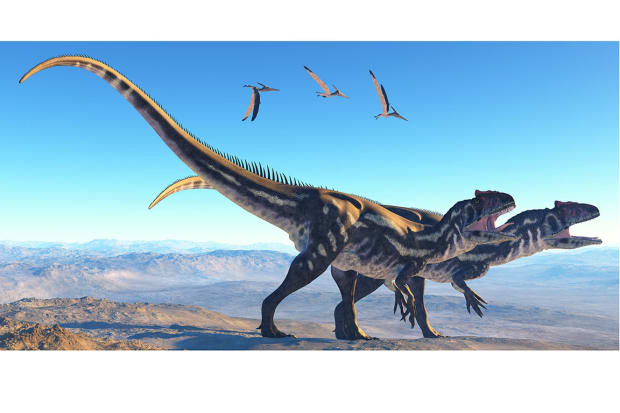
Allosaurus
Allosaurus was a large bipedal predator with dozens of sharp, serrated teeth. It was about 28 feet long. At the top of the food chain, Allosaurus probably preyed on large herbivorous dinosaurs, and maybe even other predators.
The Allosaurus appears in “Jurassic World Dominion” rampaging through a city.
Shutterstock
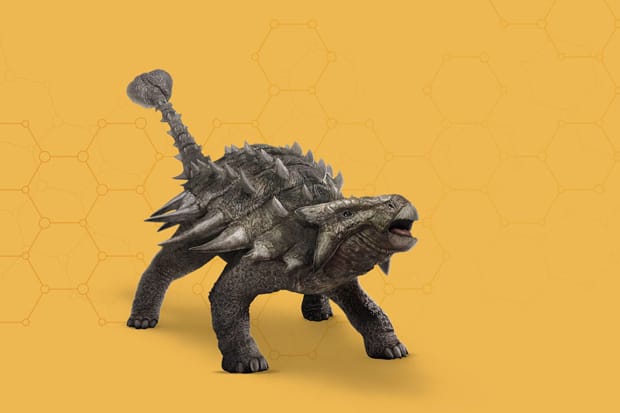
Ankylosaurus
Greek for "fused lizard," this armored herbivore is protected from carnivores by thick plates on its back, two rows of spikes, large horns and a powerful club tail. It was over 5 feet tall, up to 35 feet long and weighed up to 6.5 tons. They were last seen in "Fallen Kingdom."
Universal Pictures
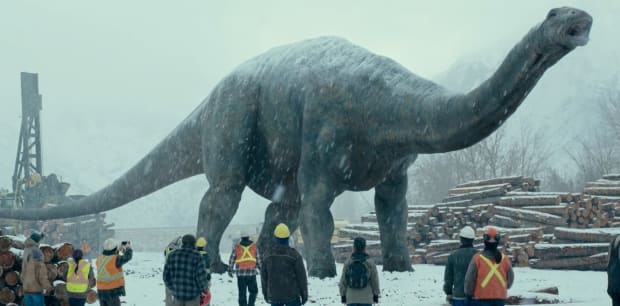
Apatosaurus
In Michael Crichton's first novel, Apatosaurus is the very first group of dinosaurs seen on the island. At some point in the "Dominion," an Apatosaurus is seen wandering in a snow-covered lumber yard, according to Fandom.
This herbivore stood 15 feet high and up to 90 feet long, and weighed 20 to 36 tons.
Universal Pictures
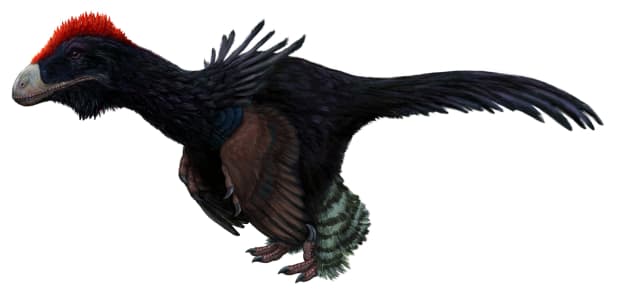
Atrociraptor
The only known specimen of Atrociraptor was found in 1995 in Alberta, Canada. It had teeth, an unusually short and tall skull, and was about 6.5 feet long and weighed about 33 pounds. According to Fandom, the film will feature four of these, with different coloring.
Michael B. H./Wikipedia
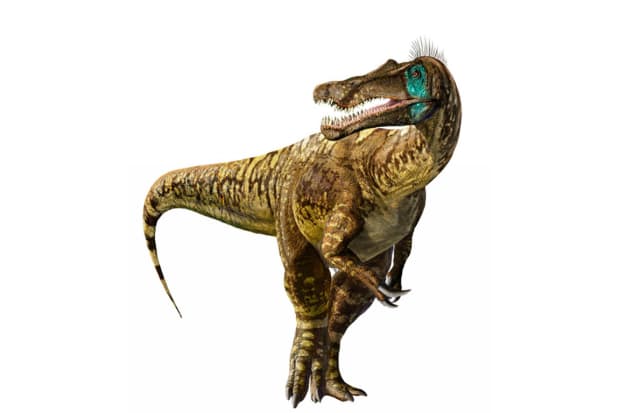
Baryonyx
The name Baryonyx means "heavy claw" and refers to the animal's large claw on the first finger. It was 25 to 33 feet long and weighed between 1.2 and 1.7 tons. Baryonyx was discovered in 1983 in England.
Scientists think the Baryonyx might have been bipedal and ate fish.
Universal Pictures
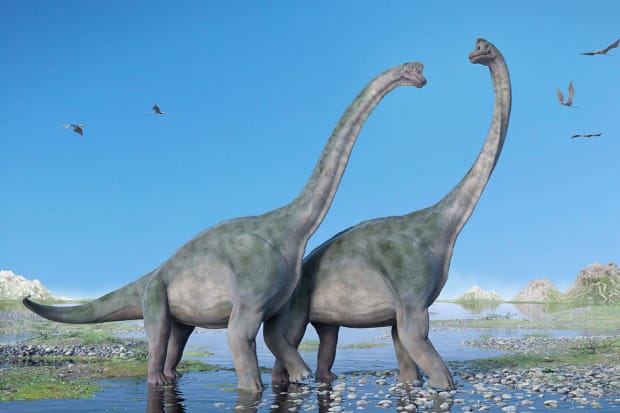
Brachiosaurus
This enormous herbivore stood up to 70 feet high and weighed up to 56 tons. Brachiosaurus’ size is its protection. From the first movie, this is the "veggie-saurus." Fossils were first discovered in Colorado in 1903.
Shutterstock
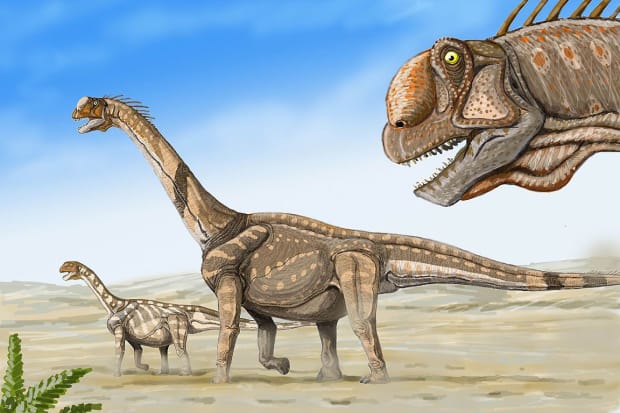
Camarasaurus
This sauropod replaces the Apatosaurus in some editions of the first novel.
An herbivore, it was the most common of the giant sauropods in North America, fossils were found in Colorado and Utah. Camarasaurus was about 49 feet long, with the largest species, C. supremus, up to 75 feet long and weighing as much as 51.8 tons.
Dmitry Bogdanov/Wikipedia
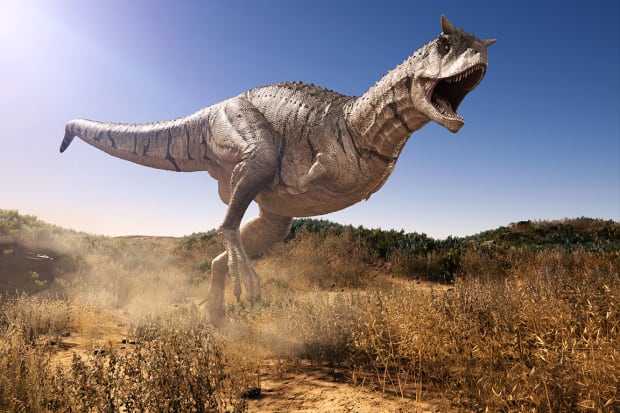
Carnotaurus
At the beginning of "The Lost World," a pair of these carnivores attack Richard Levine and kill his guide, Diego. In that film, they are capable of changing skin color like a chameleon. Carnotaurus stood about 9 feet high and 29 feet long. Look for it in “Dominion.”
Carnotaurus is known from a single well-preserved skeleton found in 1984 in Argentina. Its name means "meat-eating bull," an allusion to the animal's bull-like horns.
Shutterstock
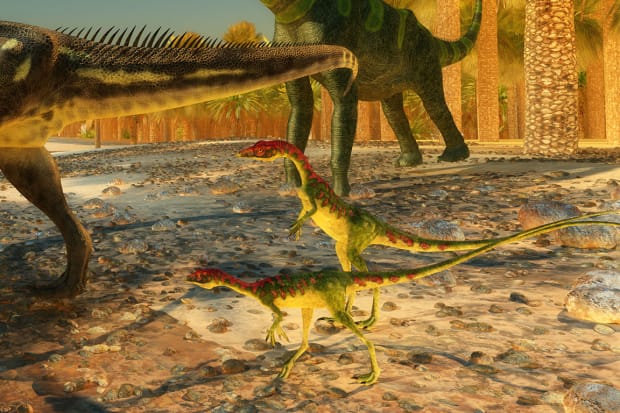
Compsognathus
These small dinosaurs briefly make an appearance in the second film in 1997, in which a pack of several Compsognathus killed Dieter Stark.
Paleontologists have found two well-preserved fossils of these little guys, one in Germany in the 1850s and the second in France more than a century later. They are estimated to have weighed between 1.8 and 7.7 pounds, about the size of a Chihuahua.
Shutterstock
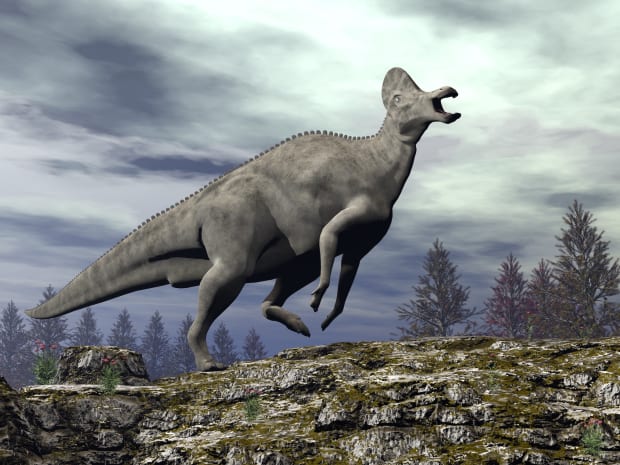
Corythosaurus
Specimens of this 27-foot-long herbivore have been found in Canada. Corythosaurus probably lived in a woodland forest, and might have occasionally wandered into swampy areas. One specimen was found preserved with its last meal in its chest cavity, including conifer needles, seeds, twigs, and fruits. Corythosaurus hasn’t been seen since “Jurassic Park III.”
Shutterstock
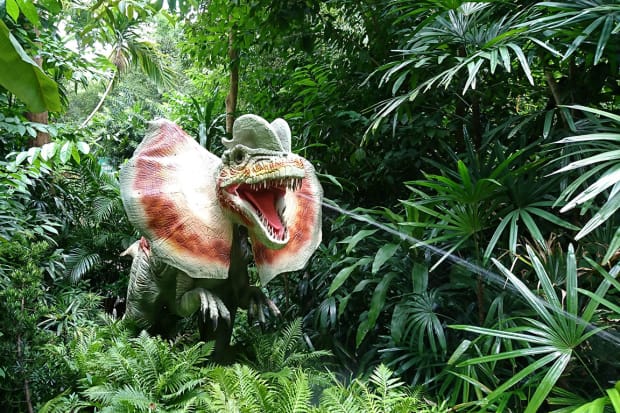
Dilophosaurus
Slender and lightly built, Dilophosaurus was about the size of a brown bear. Three skeletons were discovered in northern Arizona in 1940. The largest known specimen weighed about 880 pounds and was 23 feet long.
Scientists suggest the creature's crest was for visual display for attracting a mate, or for temperature regulation. Not seen since the original film, Dilophosaurus may make an appearance in “Dominion.”
Shutterstock
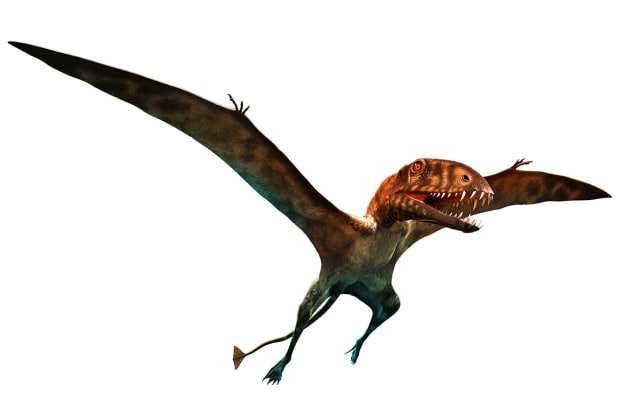
Dimorphodon
The 4-pound 3-foot-long winged Dimorphodons made a brief appearance in "Jurassic World," where they are freed from the aviary by the Indominus rex and soon wreak havoc on the tourists alongside the Pteranodon.
It had a wingspan of about 5 feet, but studies show that the animal was actually a rather poor flyer. Dimorphodon probably relied on frantic short flights, unable to fly for long distances and only taking to the air as a last resort. It probably ate insects or other small prey.
Shutterstock
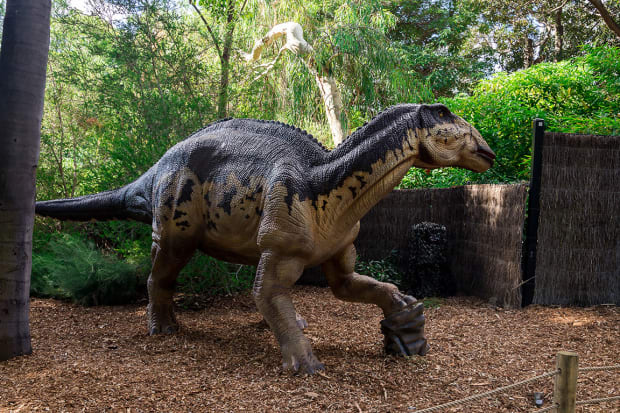
Edmontosaurus
This flat-headed duck-billed herbivore hangs out in herds and munches on conifers and other vegetation. The four-ton Edmontosaurus stood 10 feet high and 39 feet long. It was last seen alive in “Jurassic World.”
Shutterstock
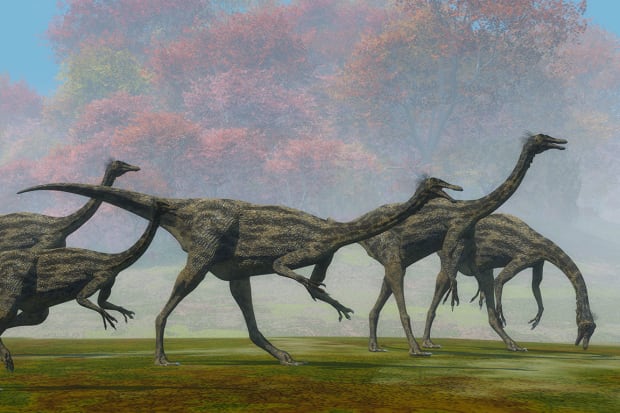
Gallimimus
Gallimimus is a genus of theropod dinosaur that lived in what is now Mongolia during the Late Cretaceous period, about 70 million years ago. It was an omnivore that would have had feathers.
Their name means "rooster mimic," though in the last movie they were more like dinosaur ostriches that could run fast as cheetahs. They weighed about 950 pounds and were up to 20 feet long.
Shutterstock
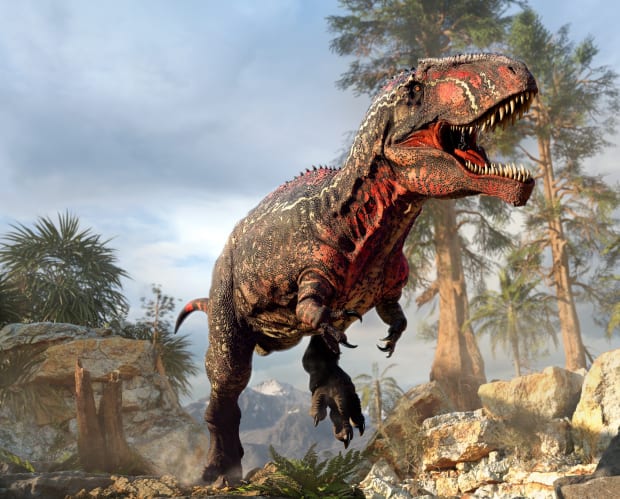
Giganotosaurus
Giganotosaurus was one of the largest known terrestrial carnivores, and at least the size of T. Rex, so naturally you’ll see it in “Dominion.” Discovered in Argentina in 1993, Giganotosaurus is believed to have weighed over 6.5 tons and was 41 feet in length. It was likely the apex predator in its ecosystem that fed on smaller animals.
Shutterstock
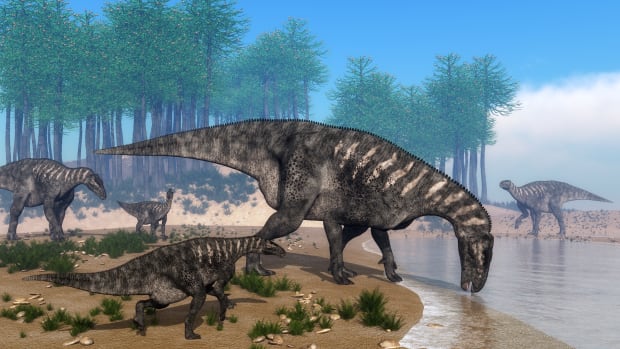
Iguanodon
You may recognize Iguanodon as the star of the Disney animated film “Dinosaur.” At least 38 Iguanodon specimens were found in a mine in Belgium in the 1800s.
Iguanodon were bulky herbivores that could move on both four legs and two legs. They were up to 26 feet long and weighing over 3 tons. They appear in the 5-minute prologue to “Dominion” that was released in 2021, and reportedly in a Cretaceous flashback in the upcoming film.
Shutterstock
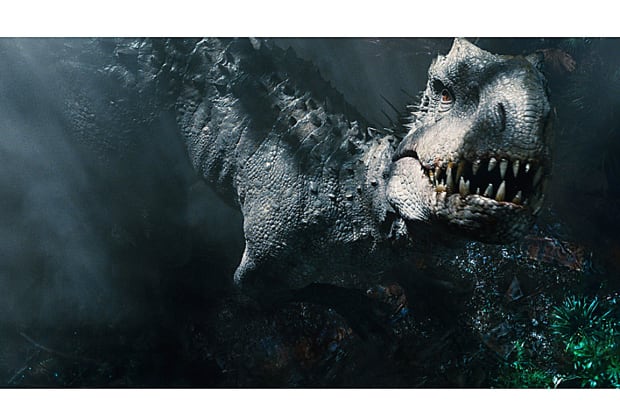
Indominus rex
Indominus rex, the genetically modified, hybrid mutant dinosaur and the main antagonist in the 2015 film "Jurassic World," is pure fiction. There never was an actual Indominus rex. But in that fictional world, the carnivore stands up to 50 feet high, can run up to 30 mph and its roar is as loud as a 747 taking off.
Universal Pictures
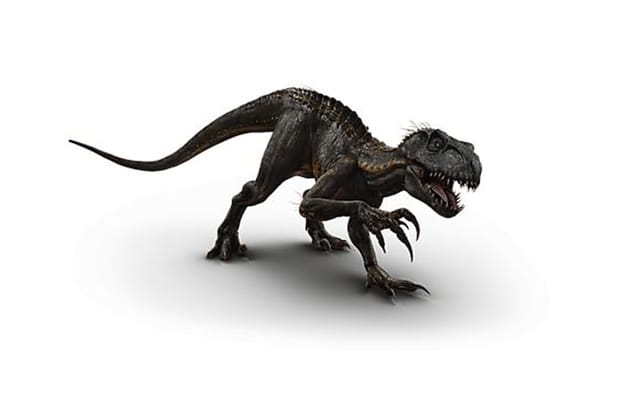
Indoraptor
Indoraptor is another fictional hybrid that appeared in "Jurassic World: Fallen Kingdom" where it was created by Henry Wu by combining the DNA of an Indominus rex and a Velociraptor.
Universal Pictures
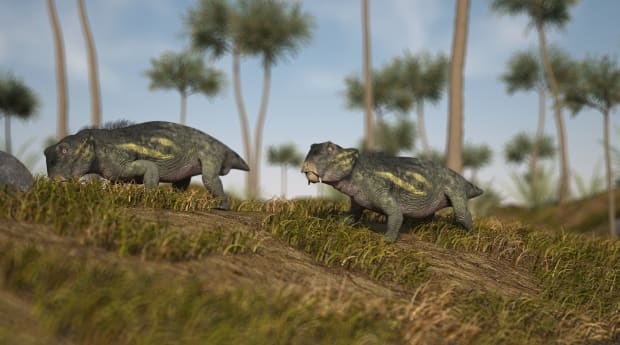
Lystrosaurus
This dog-sized, snub-nosed burrower is what National Geographic called “the most humble badass of the Triassic,” because it managed to survive the worst mass extinction the world has ever known.
Lystrosaurus, whose name means “shovel lizard,” looked like a cross between a pig and a lizard and is the first Paleozoic and Triassic (pre-Jurassic) animal to make a film appearance in the series, look for it in “Dominion.”
Shutterstock
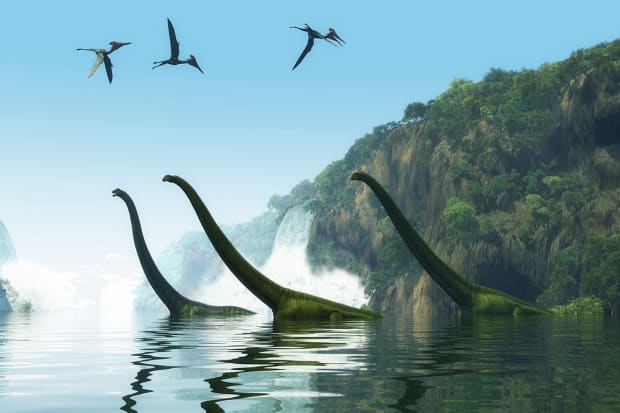
Mamenchisaurus
Fossils of these herbivores were first discovered in 1952 on the construction site of a highway in Sichuan, China. They are known for their remarkably long necks, which made up half their total body length of up to 115 feet. They stood 45 feet high and weighed 30 tons.
A Mamenchisaurus was briefly seen in a herd in "The Lost World."
Shutterstock
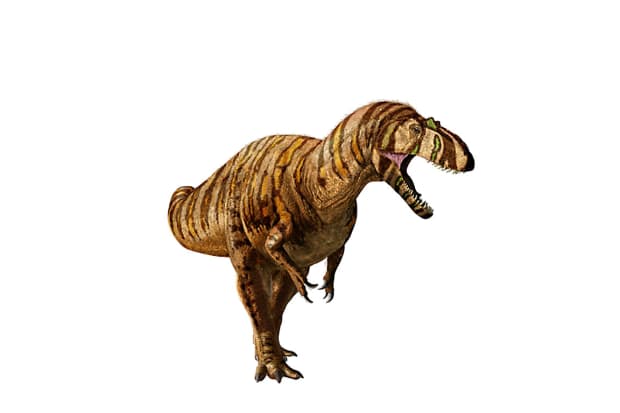
Metriacanthosaurus
A fleet-footed carnivore, Metriacanthosaurus is named for its distinctively spined vertebrae. It once stalked the ancient Jurassic plains, feeding on other dinosaurs. It stood 6 feet tall and weighed as much as a ton. It was an embryo in the original movie.
Universal Pictures
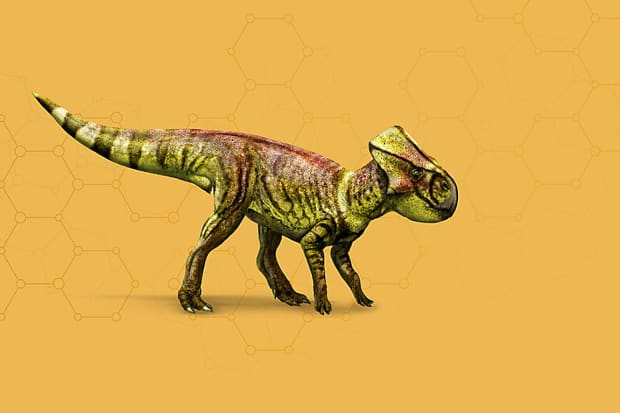
Microceratus
This herbivore lived in the Cretaceous period in Asia. It walked on two legs, had short front arms, a frill and a beak-like mouth, perfect for snapping off leaves and twigs. It was around 2 feet long, about the size of a small dog. Its name means "small-horned." It was reportedly cut from an earlier film, but according to Fandom, you’ll see it in “Dominion.”
Universal Pictures
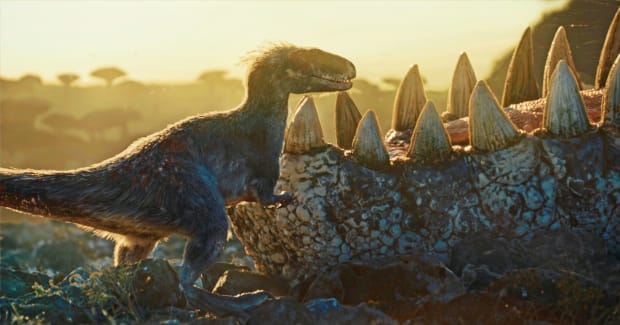
Moros intrepidus
This small-bodied, slender-footed therapod weighed around 172 pounds and would barely come up to the shoulder of the average human. It was first discovered in Utah in 2013, and is teased on the upcoming film's website.
The name is derived from the Greek god Moros: the embodiment of impending doom.
Universal Pictures
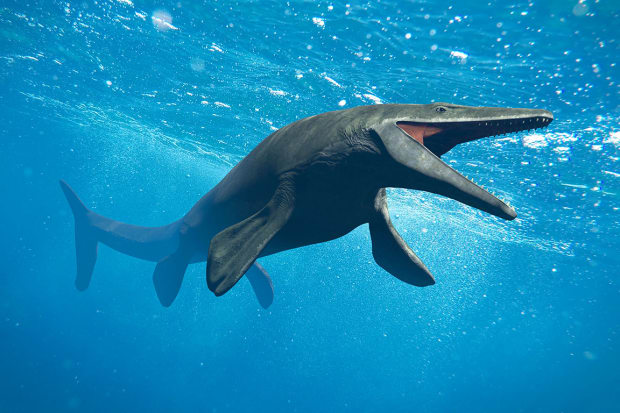
Mosasaurus
These apex predators of the cinematic prehistoric deep can feast on all manner of ocean life. Their double-hinged jaws open wide for any prey including Plesiosaurs and great white sharks. They are not actually dinosaurs, but in fact marine reptiles. The legs and feet were modified into flippers. The largest known species reached lengths up to 56 feet.
In "Jurassic World," the Mosasaurus played a part in the defeat of Indominus rex, dragging it into the lagoon. The film's Mosasaurus was criticized for appearing to some to be twice the size of the largest known species. It appeared at the end of “Fallen Kingdom,” and makes another appearance in “Dominion,” but we won’t spoil it for you.
Shutterstock
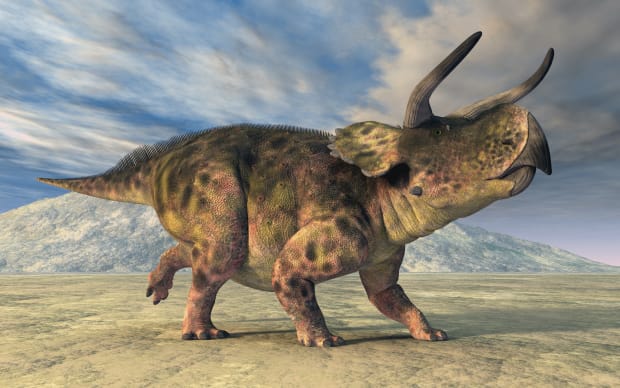
Nasutoceratops
A new one for the “Jurassic World” series, Nasutoceratops had a short, thick snout, a beak-like mouth and large cattle-like horns. Specimens of the herbivore have been found in Utah. It was almost 15 feet long and at least 1.5 tons.
Shutterstock
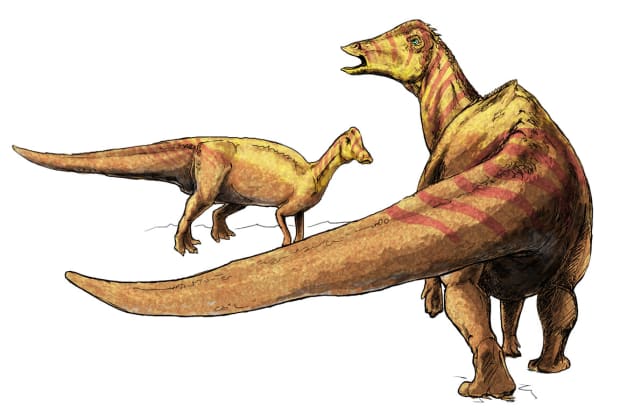
Nipponosaurus
Nipponosaurus is known from a single juvenile specimen discovered in 1934 on Sakhalin Island in Russia, part of Japan at the time. The immature specimen is about 13 feet long, and lived about 80 million years ago.
Wikipedia
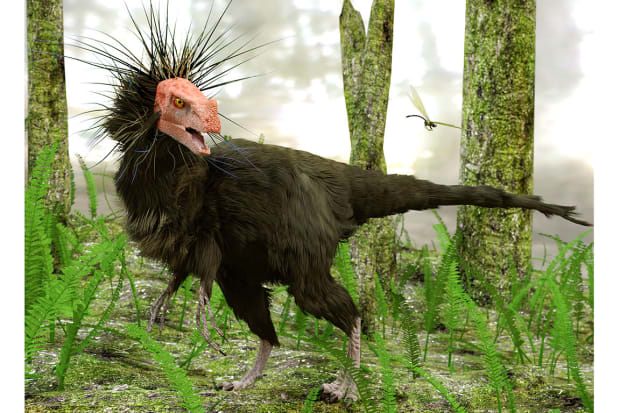
Ornitholestes
Ornitholestes was a bipedal carnivore, known only from a single partial skeleton with a badly crushed skull found at the Bone Cabin Quarry near Medicine Bow, Wyoming, in 1900. Some scientists think it had feathers. It stood about six feet and weighed about 27 pounds.
Shutterstock
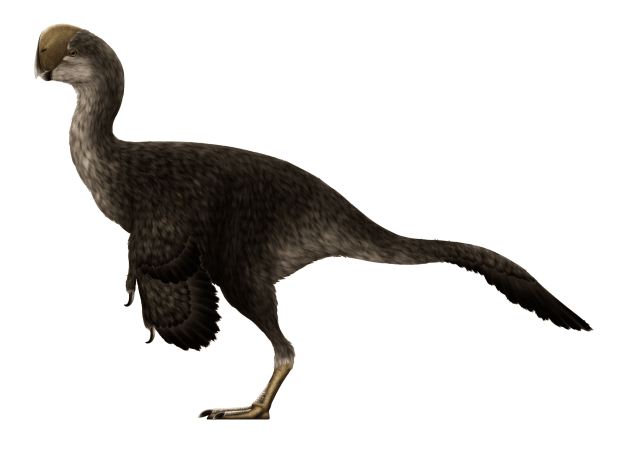
Oviraptor
The Oviraptor, or "egg thief," was relatively small dinosaur of about 5 feet long and 70-80 pounds. It was first discovered in Mongolia in 1923—a skeleton found lying over a nest of approximately 15 eggs. Paleontologists originally believed the creature was eating the eggs of another dinosaur, but later learned that instead of having been egg-eating animals, Oviraptors appeared to actually brood and care for their nests.
Oviraptor reportedly appears in “Dominion.”
PaleoNeolitic/Wikipedia
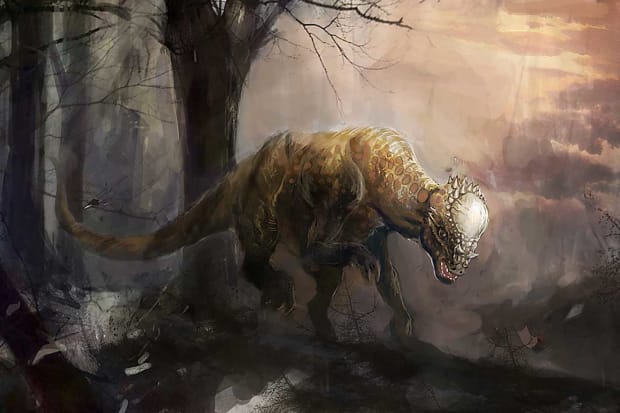
Pachycephalosaurus
Remains of this herbivore have been excavated in Montana, South Dakota, and Wyoming. It is primarily known from a single skull and a few extremely thick skull roofs -- the large, bony dome atop its skull, up to 10 inches thick, which safely cushioned its tiny brain.
Pachycephalosaurus was almost 15 feet long and weighed about 990 pounds.
In the second film, a group of poachers attempt to capture numerous species, including Pachycephalosaurus, but when the animals are freed from containment, the Pachycephalosaurus breaks out and charges at the hunters.
Shutterstock
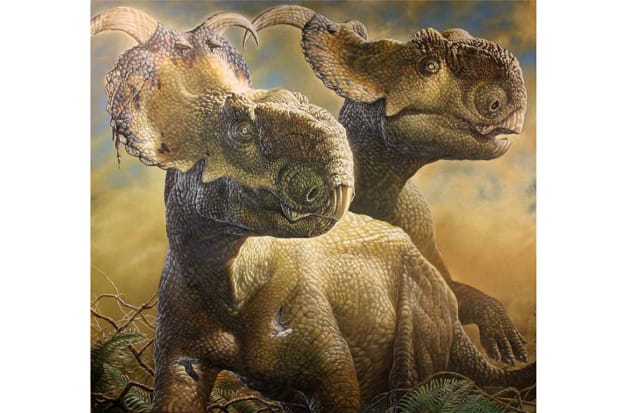
Pachyrhinosaurus
These were herbivores with strong cheek teeth to help them chew tough, fibrous plants. Pachyrhinosaurus was discovered in Alberta, Canada, in 1946. Its name means "thick-nosed lizard." Instead of horns, their skulls bore massive, flattened bosses; a large boss over the nose and a smaller one over the eyes. It was almost 26 feet long.
James havens/ Wikipedia
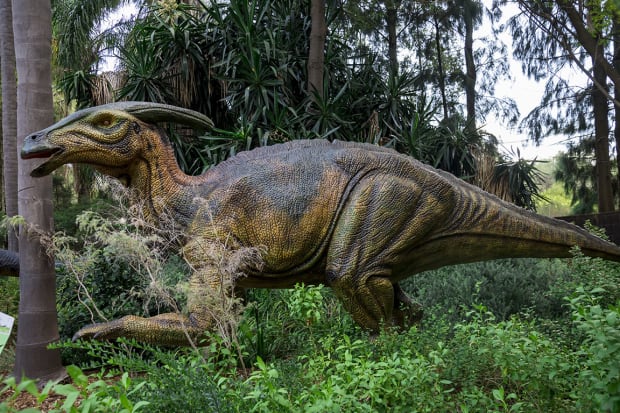
Parasaurolophus
This 2-ton crested, duck-billed dinosaur is known for bizarre head adornments, which at its largest forms a long, curved tube projecting upward and back from the skull. The purpose of the crest might have been for visual recognition of both species and sex, acoustic resonance, and temperature regulation.
In "Fallen Kingdom," you may remember Parasaurolophus roaming the Gallimimus Valley in herds, using its elongated, tube-like crest to emit haunting cries.
In “Dominion,” they are part of another herd that has an interaction with Owen, according to Fandom.
Shutterstock
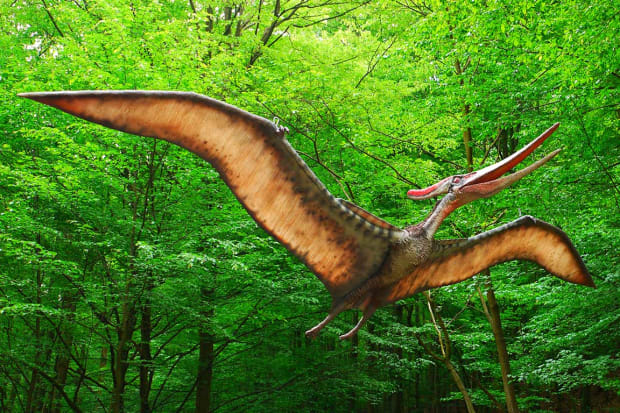
Pteranodon
Some of the largest known flying reptiles, these fish eaters had wingspans over 20 feet. They are actually pterosaurs, not dinosaurs.
Their most notable, major appearance was in "Jurassic Park III," when Dr. Alan Grant and the others went into the bird cage and were attacked. It makes a brief appearance in “Dominion.”
DinoTeam/Wikipedia
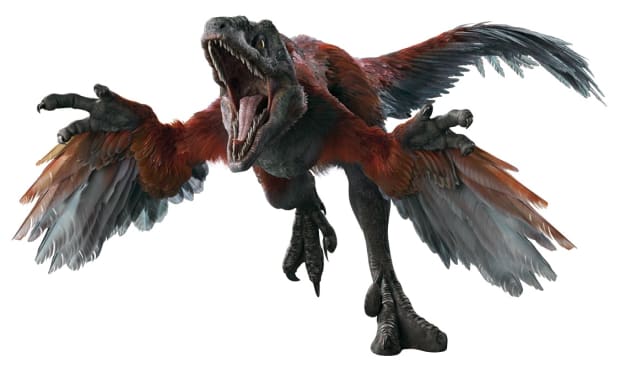
Pyroraptor
Have no doubt you will see Pyroraptors in the new film, although it portrays them as much bigger. The feathered, bird-like dinosaur was about 8 feet long but only knee-high, and had long curved claws 2.5 inches long and at least two known teeth (the picture uses creative license.) Remains of Pyroraptor were discovered in southern France after a forest fire in 1992.
Theferretman21/ Jurassic wiki
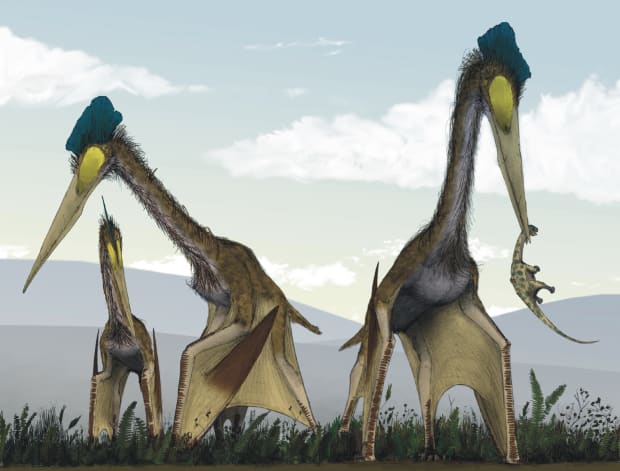
Quetzalcoatlus
One of the largest known flying animals of all time, fossils first discovered in Texas in 1971 indicate that Quetzalcoatlus had a wingspan of over 33 feet and stood 18 feet high. These creatures had unusually long, stiffened necks. Their name comes from the Aztec feathered serpent god, Quetzalcoatl. Look for it in "Dominion."
Mark Witton /Wikipedia
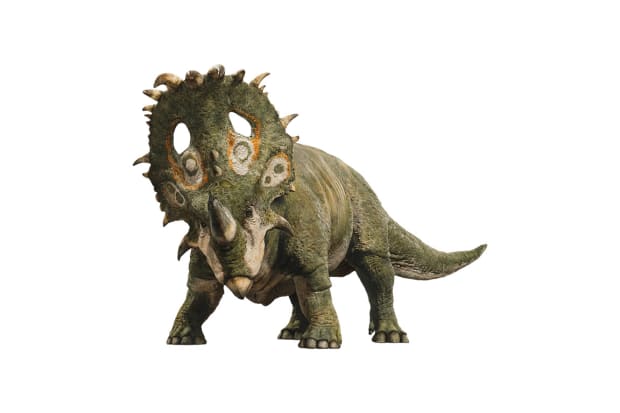
Sinoceratops
The hard-headed Sinoceratops is instantly recognizable for its skull, which can be up to 10 inches thick. Its snout and skull are covered by small knobs. The name of its type species, Sinoceratops zhuchengensis, means "Chinese horned face from Zhucheng," after the location of its discovery.
An herbivore, Sinoceratops stood over 6 feet high, 19 feet long and weighed nearly two tons. It appeared in “Fallen Kingdom.”
Universal Pictures
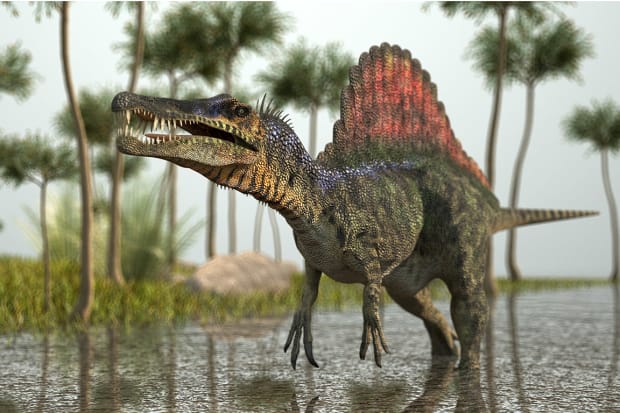
Spinosaurus
The largest of all known carnivorous dinosaurs, Spinosaurus was nearly as large as or even larger than Tyrannosaurus. Its body stretched up to 59 feet long and it weighed over 20 tons. Its distinctive spines grew to over five feet long and likely formed a kind of sail, though some scientists think it may have been a hump of fat. With its crocodile-like head, it ate fish and probably hunted both terrestrial and aquatic prey; evidence suggests that it lived both on land and in water as a modern crocodilian does.
Spinosaurus was brought into the franchise for the third film, in which it is the main antagonist, along with the Velociraptor. It didn’t make the cut for “Dominion.”
Shutterstock
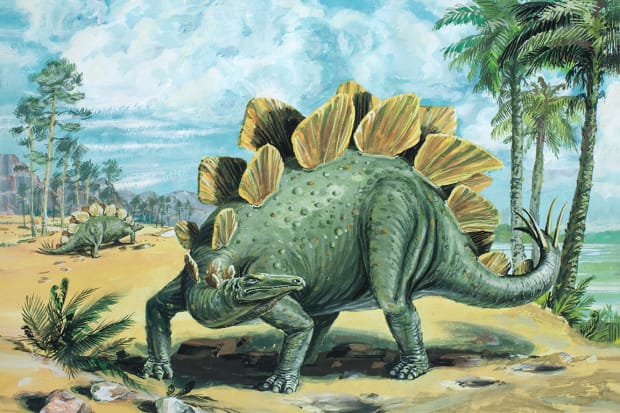
Stegosaurus
The recognizable 6-ton Stegosaurus was a small-brained herbivore with 17 bony plates along its spine and a powerful spiked tail that was most likely used for defense against predators. The plates may also have been for display or for regulating body temperature. Fossils have been found in the Western U.S. and Portugal. Fandom reports that Stegosaurus makes an appearance in the new film. The creators used the voice of a sea lion to create the dinosaur’s haunting cry.
Shutterstock
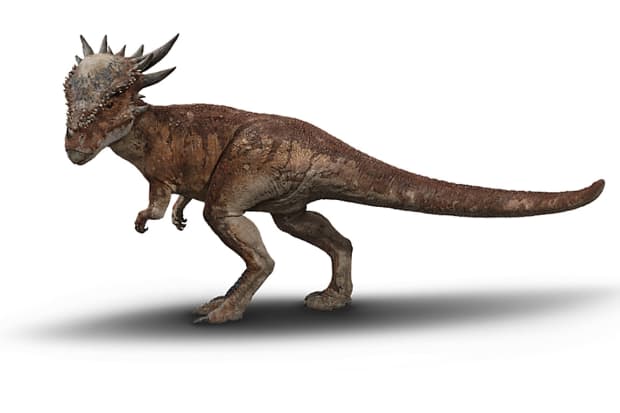
Stygimoloch
Fossils have been found in the western U.S. It is an herbivore that stands about 4.5 feet high. The name means "Styx devil" in Latin. Fandom says that Stygimoloch does appear in “Dominion.”
Universal Pictures
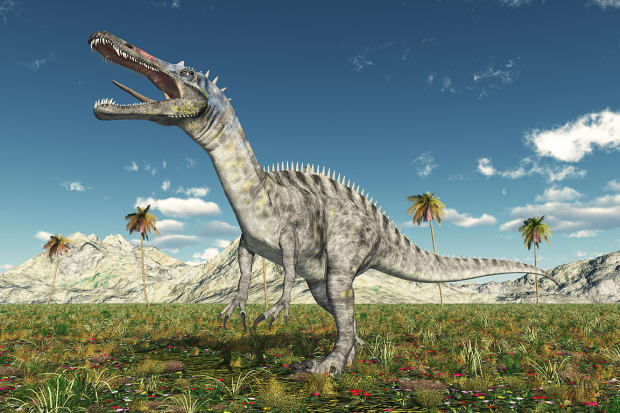
Suchomimus
The Suchomimus likely had a diet of mostly fish. It lived in what is now Niger, Africa. It had spines that may have held up some kind of low crest or sail of skin. It stood about 12 feet high and up to 36 feet long, weighing 6 tons. It was mentioned in a couple of the films, but not seen, though it appeared on the “Jurassic World” website.
Shutterstock
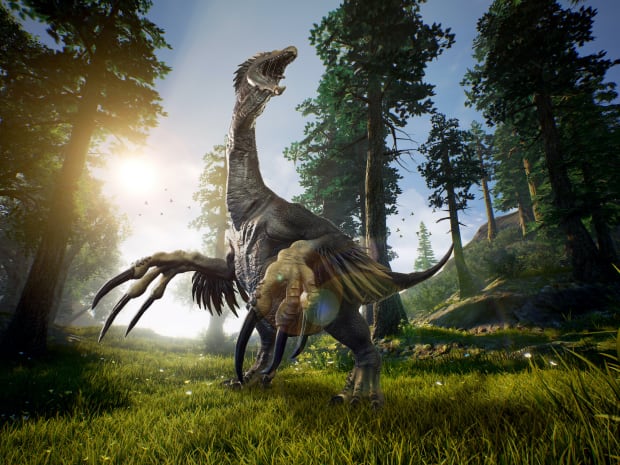
Therizinosaurus
A slow-moving, long-necked, high browser, fossils indicate that this enormous creature was up to 33 feet long and 16 feet tall. The first remains of Therizinosaurus were found in 1948 in Mongolia’s Gobi Desert. Look for it covered in feathers in the new film.
Shutterstock
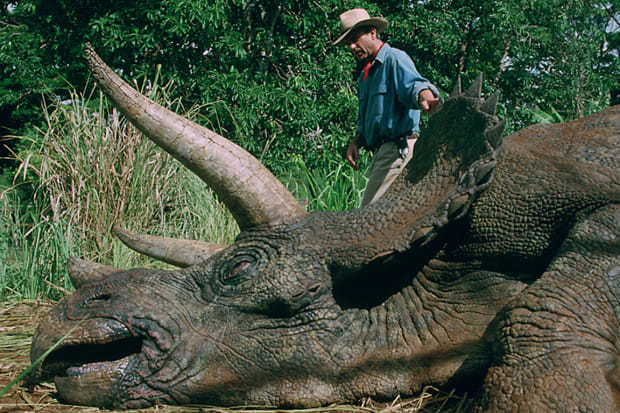
Triceratops
Triceratops was an herbivore whose head was its most imposing feature. The head measured four to five feet across and was ornamented with impressive horns and a head plate. It used its horns — a short one above its mouth and two long ones above its eyes — to charge predators, such as T. rex. They likely were also used in mating rituals.
With its horns and large bony frill, Triceratops has similarities to the rhinoceros, and is one of the most recognizable of all dinosaurs. In the first film, it was found sick and was cared for by Ellie Sattler and Dr. Harding.
Universal Pictures
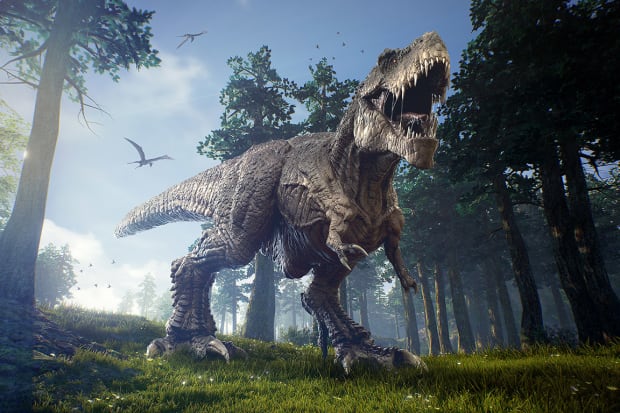
Tyrannosaurus
One of the most famous dinosaurs in the "Jurassic Park" series, Tyrannosaurus lived throughout what is now Western North America. The abundance of fossil material has allowed significant research into its biology. Scientists now consider it likely that T. rex had feathers on at least parts of its body.
A carnivore, scientists believe this powerful predator could eat up to 500 pounds of meat in one bite. Fossils of T. rex prey, including Triceratops and Edmontosaurus, suggest it crushed and broke bones as it ate, and broken bones have been found in its dung. It stood up to 20 feet high and 40 feet long, weighing as much as 9 tons.
Of course, it wouldn't be a proper "Jurassic World" film without T. rex.
Shutterstock
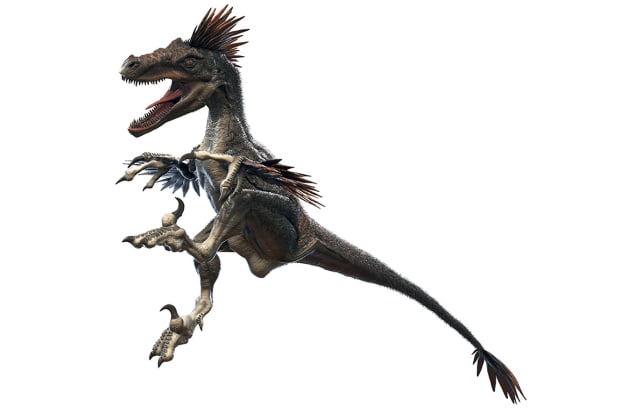
Velociraptor
The films depict Velociraptor as seven feet high, significantly larger than its actual size; in real life, it was roughly the size of a turkey. But Velociraptor was no turkey: this bipedal, feathered carnivore had a long tail and an enlarged sickle-shaped claw on each hind foot which is thought to have been used to tackle and disembowel prey. Fossils have been found in Mongolia. Its name means "swift seizer" in Latin.
In all of the "Jurassic" films, Velociraptor was one of the most commonly seen dinosaurs on the islands. They were portrayed to be the most intelligent and one of the most vicious of all the dinosaurs throughout the film series, often shown hunting in packs. Look for it in "Dominion."
Shutterstock

